The Article
IFI iOne DAC: Pocket sized but still more than a handful
20th April 2017
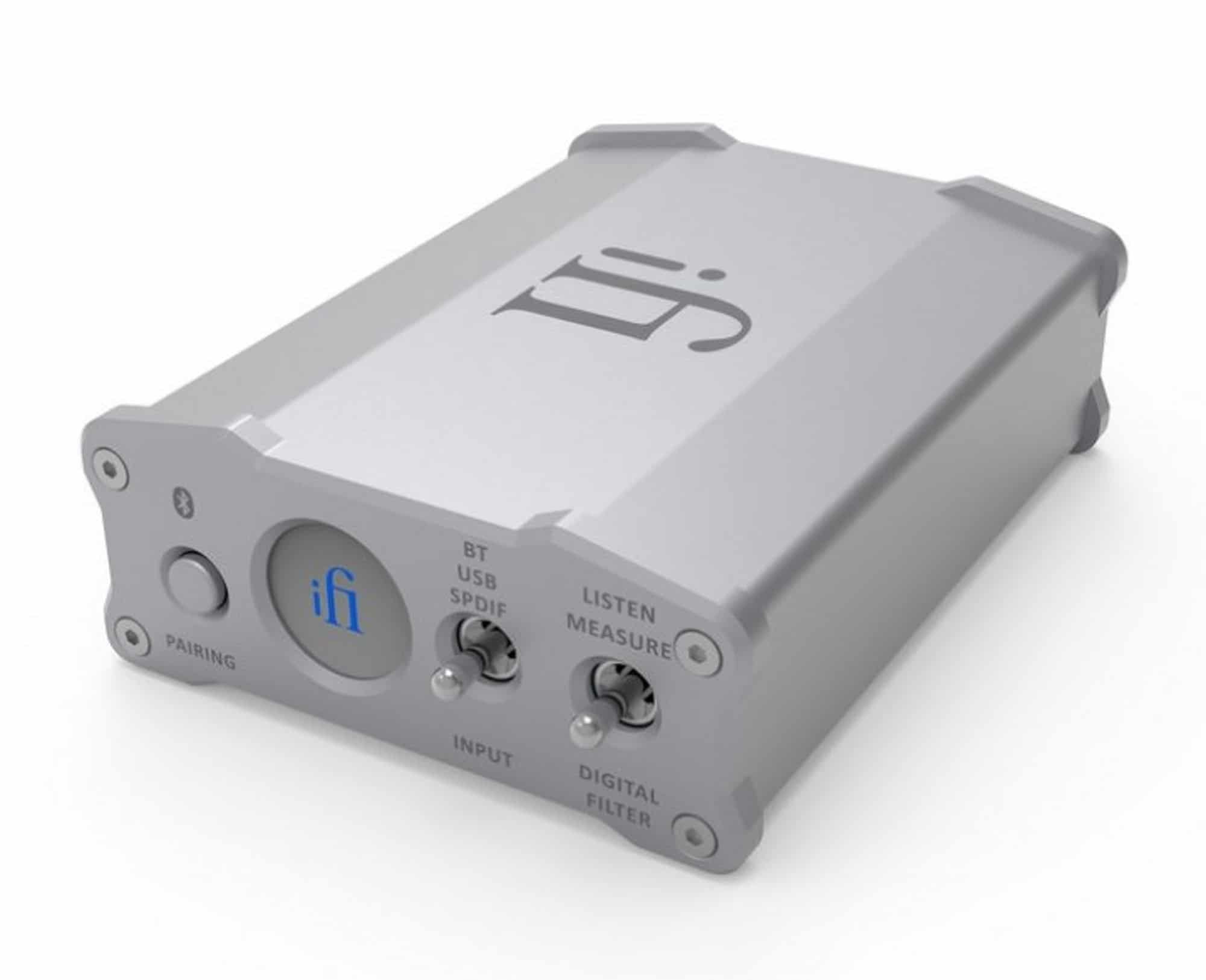
Looking for a mobile, portable DAC that can undertake a wealth of digital jobs? Paul Rigby is which is why he reviewed this example from iFi
Some of you might notice that, on this site, there are some companies who occupy more than one review slot. Some might think that, to focus on a company in such a way is tantamount to favouritism and ‘a bad thing’. Actually, there is a good reason for such a focus which can be quite positive. In fact, there are a few good reasons.
As a reviewer, I sometimes stumble across manufacturers and their kit, sometimes the company itself approaches me and, on other occasions, a third party might tip me the wink that there is something worthwhile about Company X.
The subsequent reviews might actually reveal major problems with the company approach, design and overall strategy. At this point, you pick yourself up, move on and keep on looking. There are some companies, though, which offer seeds of interest that deserve further investigation. They don’t have to blow you away from the off, with a single product, just offer promise. Reviewing more than one product from these companies reveals broad themes that are often not visible after a single product review. Themes which can teach you a lot about how that company views hi-fi and sound in general. Reviewing several products from that company gives you an insight into how they think and work. This is a good thing for the consumer because it breeds confidence to all concerned, enhances company reliability, provides an insight into that company’s passion and also gives reviewers such as myself an insight into any wrinkles that needs to be cautioned against. Such attention can be allied to a company investigation, in fact. It’s often only after you dug into the murky corners that you really see what the company is made of… Again, this sort of revelation cannot often be realised after a single product review.
Hence, not all of these worthy companies are perfect, far from it. As a reviewer, part of my job – in addition to giving you my opinion on the good/bad points of any one product – is to inform the company itself that Feature A, B or C needs tweaking, improving or dropping altogether (you’ll see one such example relating to this very DAC, actually, a bit later on in this review).
All of this can be a shock to a hi-fi brand. Some outfits like to work in a critique-free vacuum and tend to think that their products are the very ‘best’ and beyond any form of reproach. Some believe that their products are faultless, expect top rated reviews and are actually shocked when any form of criticism deigns to fall in their direction. Part of my job is to throw a refreshing cold bucket of water over such companies.
This overlong preamble might explain, to some extent, why I’ve been focusing on iFi products, of late. Partly because it offers its products at a realistic price, partly because those same products are feature-rich for the price but mostly because the company is intriguingly single-minded its hardware designs.
Hence, iFi tend to target noise very specifically and over everything else. It sees it as a problem area to be eradicated. Noise, to my mind is the Moriarty of the hi-fi business and needs direct attention. There are brands out there that do not target noise, specifically. Only indirectly. These companies offer good designs that might eradicate a lot of noise but these designs do so almost accidentally, as it where, not by design. That approach worries me because such companies proceed in a meandering and inefficient manner. Companies like iFi, who do address the issues of noise directly, do a fine job and need lots of encouragement, therefore.
So what do we have here? The iOne is lightweight at 141g and only spans 106 x 67 x 28mm so is truly a pocket DAC. Powered by a Burr Brown DAC chip with mains power via a USB port, the iOne supports PCM up to 24bit/192kHz, DSD up to 12.4Mhz and DXD up 384kHz. Including coaxial SPDIF, USB and Bluetooth outputs the DAC offers USB 3 input (with a short, supplied USB 3 cable) as well as Bluetooth with aptX and AAC support codec and SPDIF RCA. Finally, a circular display window lights up in an array of colours, depending on the source file type and its resolution. Hence, 24bit/192kHz PCM files trigger a cyan colour while DSD64 triggers a blue colour.
Other features include a Bluetooth pairing button the front with a pair of RCA outputs to connect to a hi-fi chain.
Finally, to tackle noise, iFi utilises galvanic isolation on the SPDIF port, Active Noise Cancellation on the power supply and a Femto clock to reduce jitter effects.
SOUND QUALTY
Playing the 24bit/88.2kHz version of David Elias and The Vision of Her a singer-songwriter who sings the ballad with the aid of an acoustic guitar, I noted that the one thing the the iOne does not give you is the big, epic bass of more expensive DACs. That’s not a criticism of the iFi DAC itself but is said to make you aware about what you’re getting into when you buy a DAC at this price point.
Within the price point, though, the iOne is impressive from the off. Firstly, the low noise details placed into the basic design pay off handsomely here as most users will find themselves increasing the relative gain to maintain a familiar volume, such is the removal of obtrusive electronic noise from the soundstage. That soundstage is both broad and elevated, Elias’ voice lifted higher than usual via the stereo image which was locked into place.
The guitar pickings were beautifully implemented, the metallic nature of the strings being well translated and the transient attack of each adding pace to the music. While bass might not have been generous it was, on the other hand, focused and tight in its presentation. What bass existed was efficiently presented and well balanced in and around the mix so the music never felt bass-lite.
Next, I flicked the toggle switch on the front of the iOne to BT to access the Bluetooth option. I utilised my iPhone 6S, switched it to Bluetooth and headed to the page of Bluetooth devices. I was about to reach for the iOne’s own Pairing button to initiate a Bluetooth connection but…no need! The iOne popped up on the screen. One touch on the name and the connection was made. After a couple of seconds in which the connection was forged and some minor stuttering occurred, the Bluetooth stream was steady, strong and error free.
I played Marvin Gaye’s Mercy Mercy Me, streamed as a basic MP3 and was not surprised to hear an anaemic, crippled and wholly unappetising output from the stream. No fault of the iOne, of course, just typical MP3 fare. Within the severe sonic restrictions imposed by the lack of information on offer, the iFi provided a good quality performance. The balance was neutral with no harsh midrange brightness. Bass was present and never blurry or booming while there was enough space in and around the soundstage to allow the ear to hear a variety of instruments grooving behind the Gaye delivery. Gaye himself was recognisable and his demeanour both relaxed yet earnest. A satisfying and pleasing performance from this ghastly file format.
Finally, I wanted to utilise the iOne in a slightly unorthodox manner. This small footprint DAC will find use hanging off computers and the like with mobile device streaming and powered speakers hooked up to it. It can, though, provide a useful upgrade for older CD players where the DAC, hooked up to the original transport, can bring new life to a CD-based hi-fi. Of course you need the CD player to have a digital socket to connect the iOne too.
I used my Leema Essentials CD player to see how it coped. What I did quickly realise was that the USB3 power socket is the DAC’s power source and, hence, required a connection throughout. Because the supplied cable is short, this meant that I had to connect it to a laptop to keep it powered. The cable was too short to reach a power socket. If you plan to use the DAC for non-computer activities, budget for a long USB3 cable (a cable of two metres will cost £9.50) and a suitable 3-pin mains plug to accept the cable (around £4).
I did raise this issue with the company and, to it’s credit, iFi replied with, “…a USB charger of 5V will come with later models.”
Once properly connected, I played the dynamic electronica of Kreidler and their new album European Song.
The iOne supplied an admirably fine performance connected to the Leema, being focused and precise. Lacking a touch of lower end bass but, for the price, performing very well indeed and what bass there was proved punchy and sprightly. Ideal for a £500 or less CD player as a DAC upgrade, then.
CONCLUSION
For such small footprint the iFi iOne provides a wealth of features and flexibility, giving you a gamut of connectivity options. Whatever you do plug into this DAC, though, you will find a neutral and well balanced sound quality that gives you more music for your money due to its low noise output. Great value for money.
IFI NANO IONE DAC
Price: £199
Tel: 01900 601954
Website: ifi-audio.com
TO BUY CLICK BELOW:
EUROPE – https://amzn.to/3oTeoLk
GOOD: low noise, price, clean mids, focused bass, expansive soundstage
BAD: restricted lower bass, short USB3 power cable, no USB-socketed mains plug included
Rating: 8
REFERENCE
MacBook Pro computer
iPhone 6S phone
ATC HDA-P1 DAC
Benchmark DAC
Leema Essentials CD player
Astell & Kern AK120 (Red Wind modified)
Icon Audio PS3 phonostage
Aesthetix Calypso pre-amp
Quad ESL-57 speakers with One Thing upgrade
Vertex AQ/Tellurium Q cabling
HRS isolation accessories

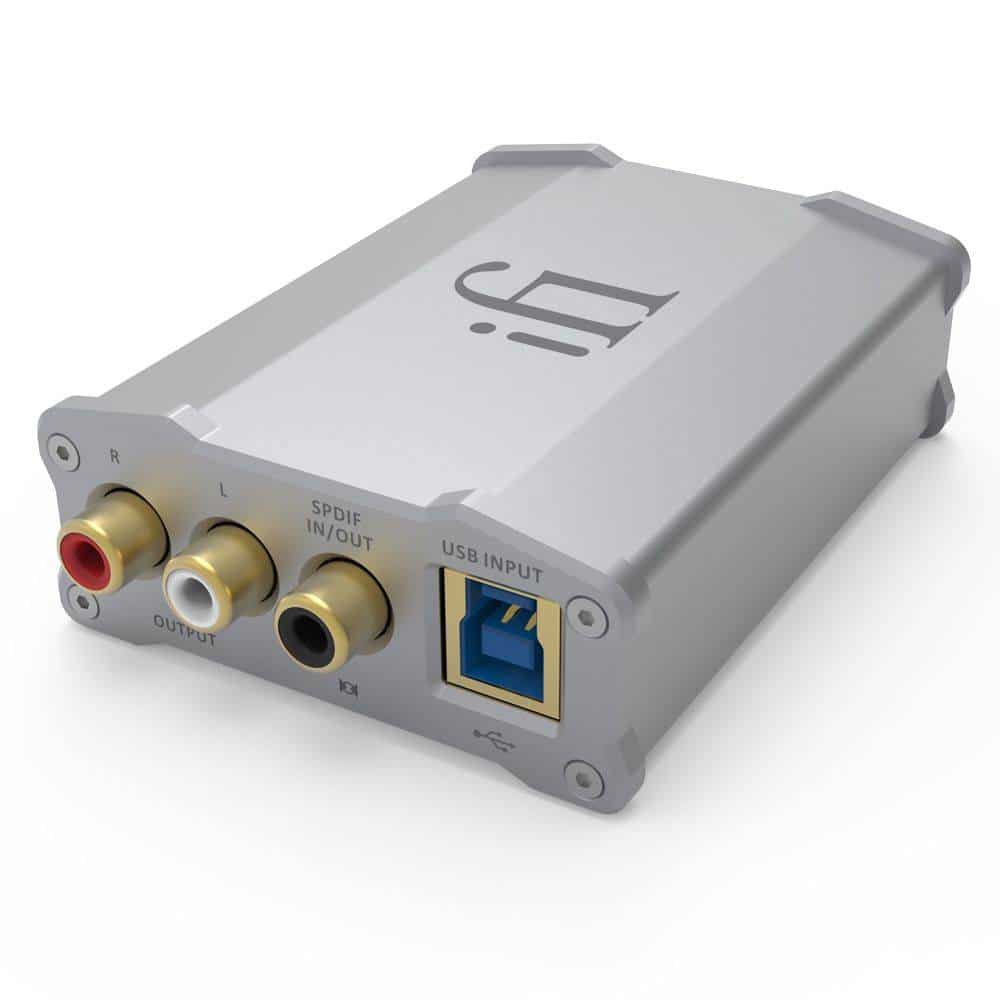
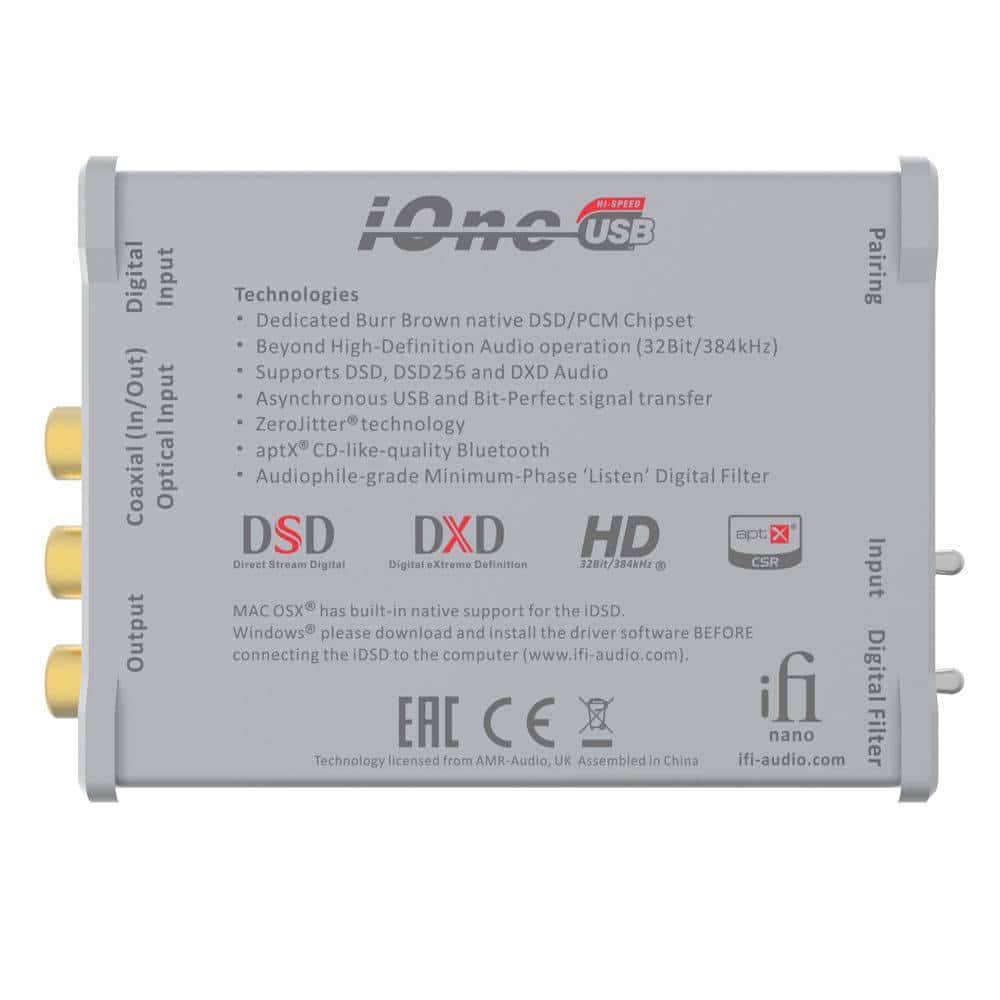
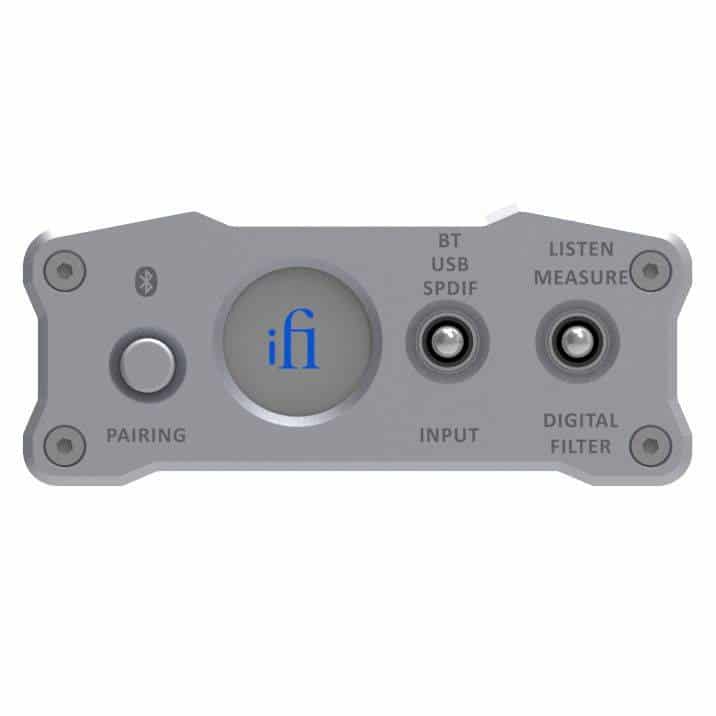
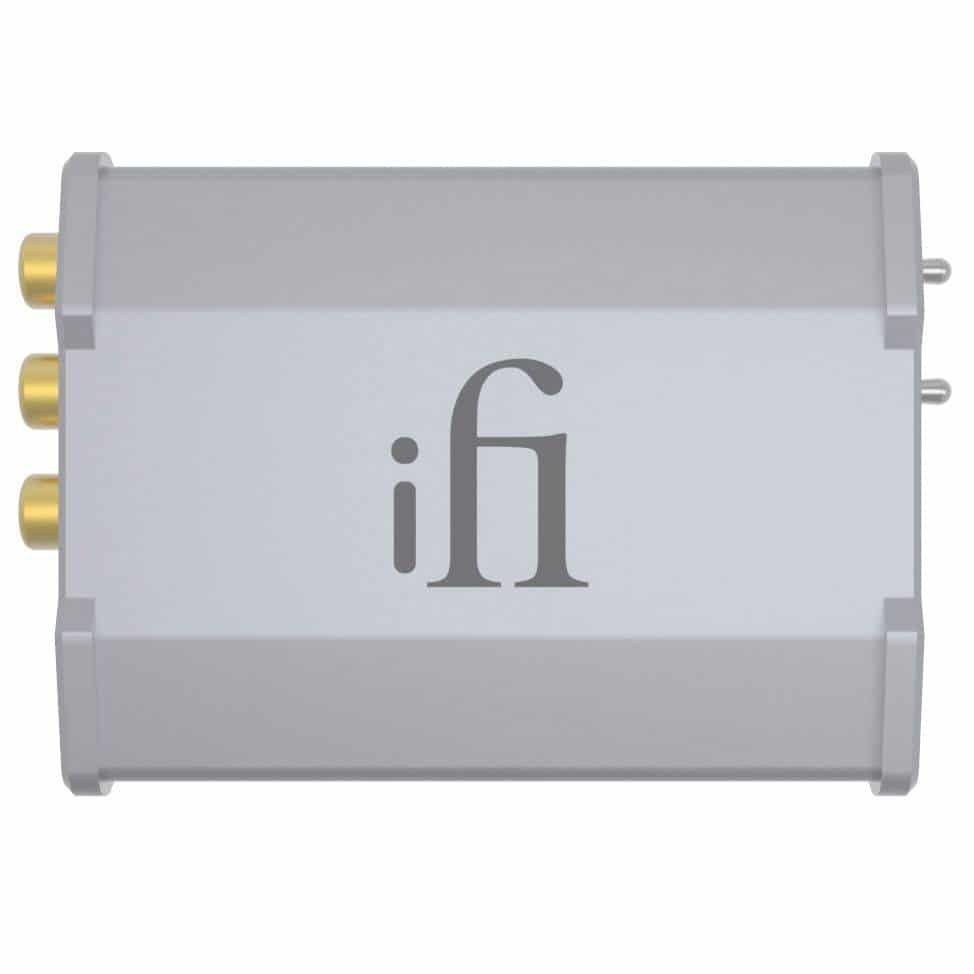


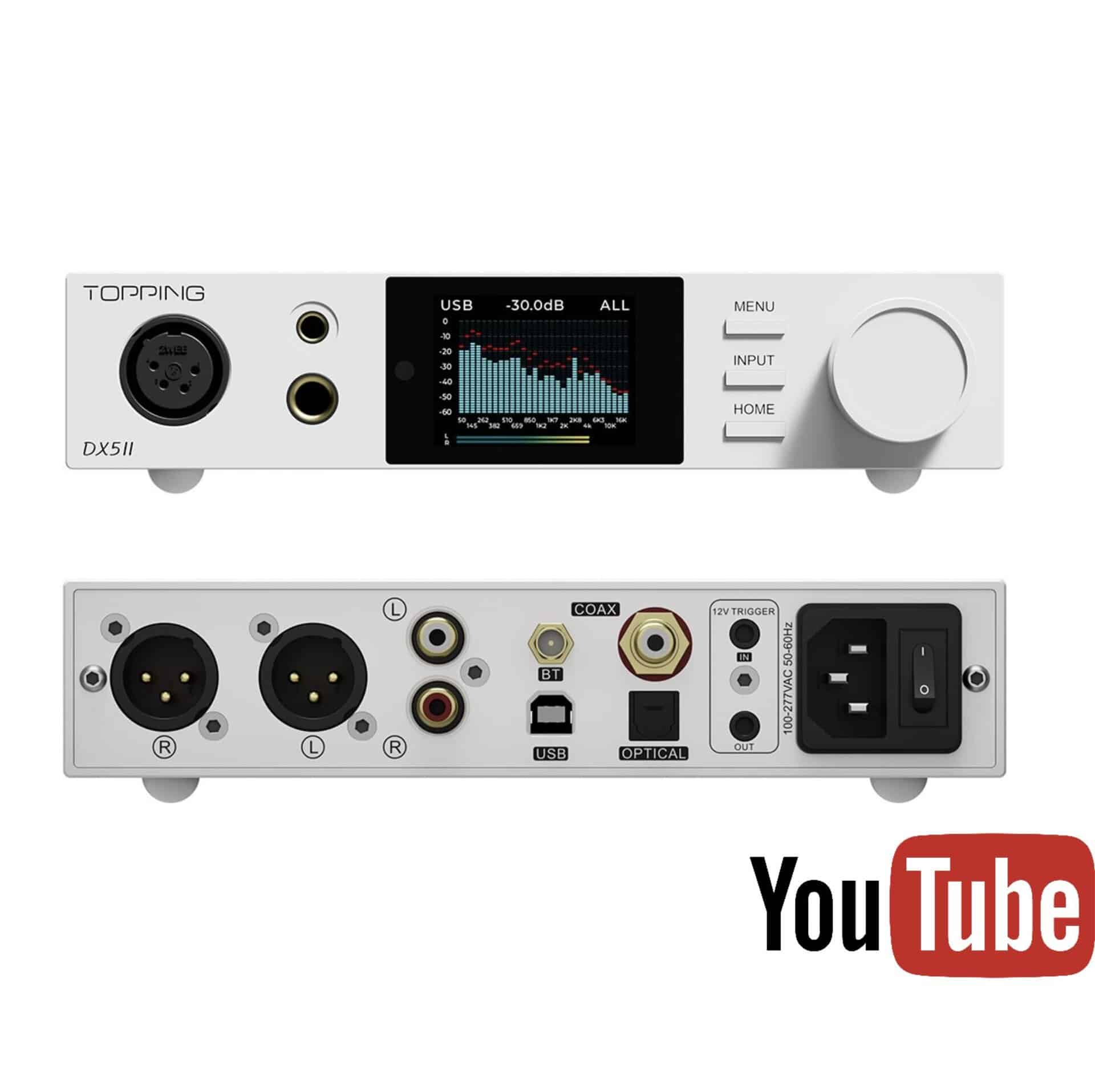
I have a tidy pile of iFi devices, but I’ve not picked up this one yet. Interesting. Thanks for sharing your experience with the iOne. I do have one quick correction: at least according to the specs (and based on my experience with other iFi DACs from the last three years), the iOne supports 352.8 and 384 kHz PCM. The photo of the bottom of the device even states as much. This feature is not that useful for many reasons, not least of which is that there’s not much content at these high sampling frequencies…but many folks in audio like “headroom” and overkill in this hobby, so I thought it was pointing out. Cheers.